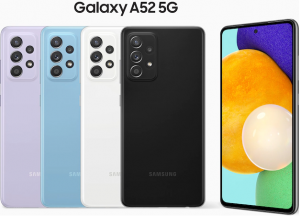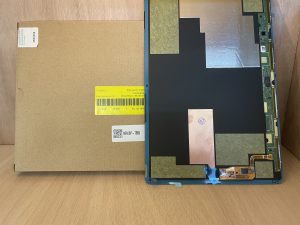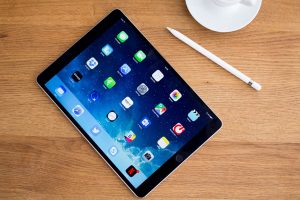Is your Samsung Galaxy S23 Ultra not getting charged despite being connected to the charger? Or you are facing issues with data transfer. It is liable that your charging port needs replacement. Your phone’s usage becomes confined if its USB-C port is damaged. We have come up with an answer to your ultimate question. How to DIY Samsung Galaxy S23 Ultra USB-C Port Replacement? A step-by-step guide is provided for you. Have a look at all the necessary tools and procedures.
Our DIY USB-C replacement manual is convenient, budget-friendly, and easy to understand.
Damaged or malfunctioning USB-C ports occur due to debris or dust built up or sometimes due to incompatibility with other brands of USB accessories. Simple tools like mm-long screws, suction handles, adhesive slides, etc., are used in the process of replacement. Let’s have a look at all the tools needed. Further, let’s explore the user manual for the self-replacement of the Galaxy S23 Ultra charging port.
Tools You Will Need
The equipment you will need to replace the USB-C port in your Galaxy S23 Ultra is listed below.
*Sim Card Eject Pin
*iOpener
*Heating Tools, e.g., Heating gun, Hair Dryer, Heating ring, etc.
*Suction Handle
*Opening Picks
*Tweezers
*Mm-long Screwdrivers
*Spudger
Precautions
Here are some precautions that can help you replace the USB-C port successfully and safely.
*Always turn off your phone before starting any repairs. This prevents electrical damage.
*Disconnect the battery connector as soon as you open the phone. This ensures you avoid short circuits and further damage.
*Use a SIM ejector tool to remove the SIM card tray. This helps prevent any damage during the repair process.
*Make sure your workspace is clean and free of static. Static electricity can damage electronic components.
*Have all the required tools ready, including a heat gun, plastic opening tools, and a screwdriver. Proper tools make the process easier and safer.
*When heating and removing the back panel, apply gentle and even heat. This will soften the adhesive without damaging the phone.
Step-by-Step Guide
Let’s begin with the steps you will follow to change your charging port.
Step 1: Remove Accessories
*First of all remove extra accessories like sim card port and pen.
*Carefully peel off any screen protectors. This helps avoid any accidental damage.
*If your phone has an SD card, take it out.
Step 2.Warm up the Right Area
*The phone’s back is attached strongly with an adhesive to produce water-resistant and structurally strong features.
*Heating softens and loosens the adhesive.
*Warm up your phone’s back with an appropriate tool, like an iOpener or a heating Gun.
*Start heating from the edge nearest to the USB-C port.
Important Points to Remember While Heating
When replacing the charging port by yourself and heating the back of the phone, keep in mind the following:
*Heating is necessary because it allows safer removal. Otherwise, your phone is prone to cracking open due to Samsung’s strong adhesives.
*There are a large number of options for heating the adhesive of your phone. Among these, the iOpener is the safest. It controls the amount of heat. It heats only the area that needs to be heated.
*Avoid overheating the phone. This can damage the motherboard and inner parts. Usually, with an iOpener, heating for two minutes is enough.
*Follow the instructions for heating carefully.
Step 3: Know the Adhesive Placement
The Samsung Galaxy S23 Ultra’s back has adhesive along the perimeter. The most secure and hard adhesive is applied on the top left and bottom right corners of the back. When these simple points are known, you can safely remove the adhesive by applying heat where needed. In this way, you will remove the back without damaging the surroundings.
Step 4: Apply Suction Handle
*The Suction Handle is a round tool with a suction pump.
*It is attached to the clean center of the right back of the phone for convenience.
*The vacuum in the suction pump creates a smooth attachment.
*Now, pull the suction handle firmly away from the phone.
*You will only need a little force if you have heated the right points before. This creates a gap for inserting the opening pick.
Step 5: Insert the Opening Pick
*Now insert the opening pick inside the right side of the back, where the suction handle creates a gap.
*If the gap is not enough, repeat steps 1 and 2 again.
Step 6: Move the Opening Pick
*Carefully insert the opening pick into the gap you created earlier. This helps start the separation process.
*Move the pick steadily along the right edge of the phone’s back. Avoid rushing to prevent damage.
*Keep the pick close to the edges as you move it. This targets the adhesive directly.
*Apply light pressure to the pick while moving it. This ensures you don’t crack the back panel.
*If the adhesive feels too strong, reheat the back panel slightly. This softens the adhesive and makes it easier to separate.
Step 7: Warm Up the Bottom Side
*Use a heat gun or hair dryer for this step. Set it to a low heat setting to avoid damage.
*Move the heat source evenly across the bottom side of the phone. Avoid staying in one spot for too long.
*Maintain a distance of about 6 inches from the phone. This prevents overheating and potential damage.
*Heat for about 1-2 minutes, checking regularly. This ensures consistent warmth without overheating.
Step 8. Separate Upper Right Adhesive
*Heat the bottom of the back of your phone.
*Now insert another Opening Pick inside the upper right edge when the suction handle provides a gap.
*Move slowly from center to top right to separate the adhesive cautiously.
Step 9: Separate Bottom Right Adhesive
*Insert another Opening Pick inside the bottom right edge when the suction handle provides a gap after another heating session.
*Move slowly from center to bottom right to separate the adhesive cautiously.
Step 10: Separate Corner Adhesive
*This is a very important point for opening the back of your phone without breaking it.
*Start moving the opening pick from the bottom side, sliding it to the corner of the phone.
*Slightly push upwards to separate the adhesive from the corner completely.
Step 11: Warm Up the Left Side
*After sliding picks on the right edge, get ready to heat the left side.
*Choose a heat gun or hair dryer set to low heat. This ensures safety, even heating.
*Move the heat source evenly along the left side. Avoid focusing on one spot.
*Keep the heat source about 6 inches away. This prevents overheating and damage.
*Heat the area until it is warm, not hot, to the touch. This softens the adhesive.
*If the adhesive is still tough, reheat gently. This makes the adhesive easier to work with.
Step 12: Separate the Left Adhesive
*Insert the opening pick into the gap created by the suction handle on the left side.
*Slide the pick along the left edge gently. Ensure steady, consistent movement.
*If the adhesive feels stubborn, briefly reheat the area. This softens the adhesive further.
*Ensure you move the pick evenly along the edge. This helps in separating the adhesive smoothly.
Step 13: Separate the Corner Adhesive
*Place your opening pick near the bottom right corner.
*Start sliding the pick towards the left corner. Ensure a slow and steady motion.
*Apply gentle pressure while sliding. This helps in loosening the adhesive.
*Once you reach the corner, slowly push the pick upwards. This detaches the corner adhesive completely.
Step 14: Warm Up the Top Edge
*Heat the iOpener as per the instructions, usually in the microwave for about 30 seconds.
*Place the heated iOpener on the top edge of the phone. Ensure it covers the entire top edge.
*Leave the iOpener in place for about 2 minutes. This allows the adhesive to soften.
*After 2 minutes, carefully remove the iOpener. The adhesive should now be softened.
Step 15: Separate the Top Adhesive
*Place a third opening pick at the top edge of the phone’s back.
*Use a suction handle to slightly lift the back panel. This creates a gap for the pick.
*Gently slide the pick along the top edge. This helps in loosening the adhesive.
*Continue sliding the pick until the top adhesive is fully separated. Patience is key to prevent damage.
Step 16: Separate the Top Corner Adhesive
*Separate the adhesive from the top corner by slowly sliding the pick from the top center to the corners.
*While moving, be cautious of the camera and flashlights. At most, 4mm picks should be used.
Step 17: Separate the Remaining Adhesive
*Place your opening picks along the edges where adhesive remains.
*Gently slide the picks back and forth. This action helps in loosening the adhesive.
*Apply firm but gentle pressure. Too much force can damage the phone.
*Gradually work the picks around the entire edge. This ensures all adhesive is separated.
*Once the adhesive is fully separated, you should be able to lift the back panel easily.
Step 18: Remove the back cover.
*Pull the cover towards you from the bottom and slowly remove it horizontally.
*If you find it stuck still, move the opening picks through the perimeter of the frame again.
*Use tweezers to prick any remains of glue on the inside.
Step 19: Detach the NFC Antenna
*Now comes the business of Phillips screwdrivers and spudgers.
*Use a spudger to lift the antenna’s press connector from the motherboard.
*It should be lifted up enough to disconnect the NFC antenna.
Step 20: Detach Charging Inner Coil
*Find the inner wireless charging coil inside the phone.
*Insert an opening pick between the coil and the phone’s frame.
*Slide the pick around the coil to loosen and detach it. Be gentle to avoid damage.
*Once loose, carefully lift the coil away from the phone. It should come off cleanly.
Step 21: Detach Coil Adhesive
*In this model of Galaxy phones, the charging coil is attached to the battery.
*Insert a pick at the right side of the battery and wireless charging coil.
*Slide through to separate the adhesive.
Step 22: Separate Remaining Adhesive
*Now, insert a pick between the charging coil and the phone’s body to remove the remaining adhesive.
Step 23: Unfasten NFC Antenna and Coil
*Now, you can remove your antenna and charging coil from the battery.
*Use Phillips screwdrivers to remove tiny 3.5mm screws on the sides of the antenna and coil. After this, they will be unfastened completely. Save these screws for reattachment afterward.
Step 24: Disconnect Loudspeaker
*Find the loudspeaker component inside your phone.
*Carefully remove each screw holding the loudspeaker.
*Gently lift out the loudspeaker once the screws are removed.
Step 25.Remove the clip of the Loudspeaker
*Remove the loudspeaker and pave the way for charging port replacement.
*Insert the pointed side of the spudger to remove the attaching clip of the loudspeaker.
Step 26: Remove Assemblies
*Now, one by one, remove the assembled loudspeaker, antenna and coil.
Step 27: Detach Battery
*Identify the battery connectors on the motherboard.
*Use a spudger tool for precision and safety.
*Gently insert the spudger under the battery connector.
*Carefully lift the connector upwards to release it from the motherboard.
*Ensure the battery is fully disconnected and no longer attached.
*With the connector detached, you can now safely remove the battery.
Step 28: Detach Interconnect Cables
*Using your spudger, first pull up the secondary interconnect cable’s press connector to disconnect it from the motherboard.
*Then, repeat the process for the primary interconnect cables.
Step 29: Remove Cables
*Remove the cables from the frame.
Step30: Disconnect Charging Board
*Samsung Galaxy S23 has a charging board secured by three 3.5mm screws.
*Remove them using your Phillips screwdriver.
Step 31: Remove Charging Board
*Use your spudger’s pointed end to push up the top right of the charging board until you can prick it with your hand.
*Pull it apart from the device for complete removal.
Replacement and Reassembling of Samsung Galaxy S23 USB-C Port
After successfully opening your phone, make sure to properly clean it and mend any glitches before reorganizing it. You must also remove any debris or glue from the parts of your mobile before assembling it again. You should fully charge your battery before inserting your new charging port.
As we advised, your screws must be saved for reassembly. Now repeat the steps in a backward order to assemble your phone again. Use your spudger to push down the press connectors in their places on the motherboard after you push the new port into its recess. Now, one by one, reattach your coils, antenna, daughterboard assembly, loudspeaker, and interconnect cables.
You should follow the reverse order for reattachment.
Use a high-quality adhesive to foolproof attach the back of your phone. Just make sure that there are no creeks or air bubbles in the adhesive when attaching. Once you have glued your phone back as it was before, make sure that it rests for at least 36 hours before usage. After this, you are good to go!
Disclaimer:
We do not give you a warranty for your phone’s water resistance after you have followed our instructions for replacing the USB-C port. You might also find some structural changes. It would help to become more careful when using reassembled phones because they are usually more fragile and prone to breakage.
Conclusion
By replacing the USB-C port on your Samsung Galaxy S23 Ultra yourself, you can avoid paying for expensive expert repairs. But proceed with caution—the procedure calls for applying specialist tools and sticking to certain steps. Even though there are thorough instructions offered, keep in mind that trying this repair could make your phone less water resistant and violate its warranty. If you’re not sure of your abilities, think about getting expert assistance.


























